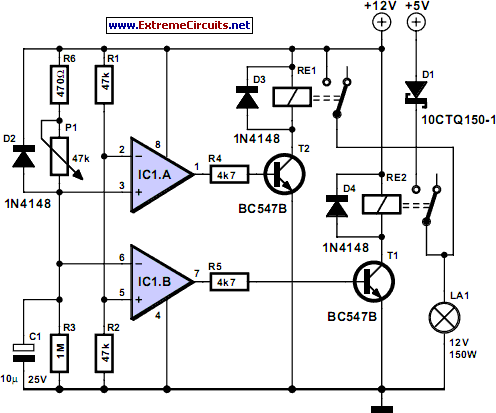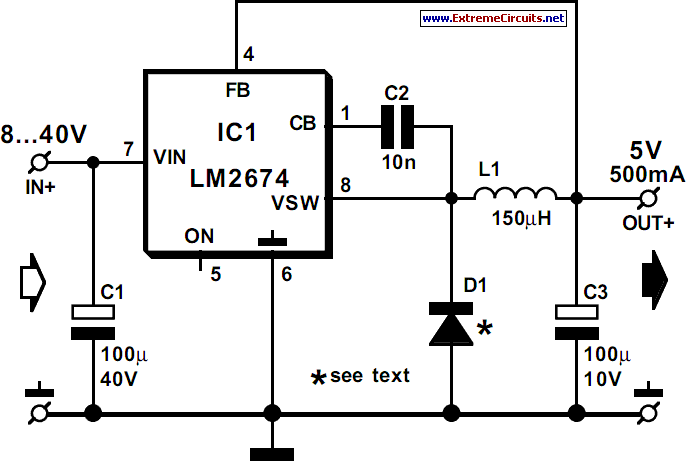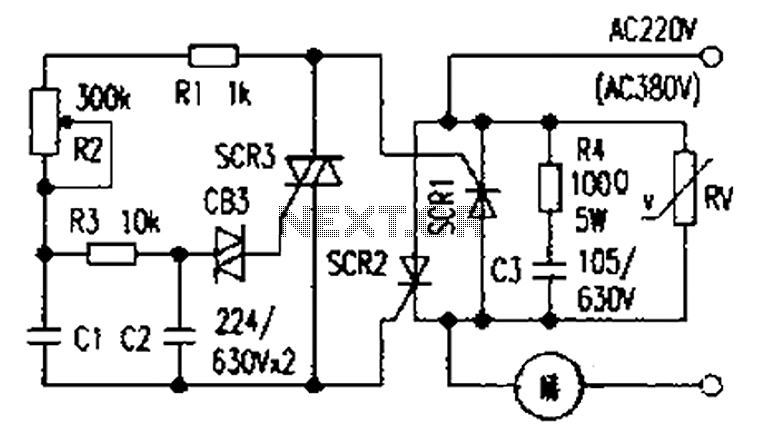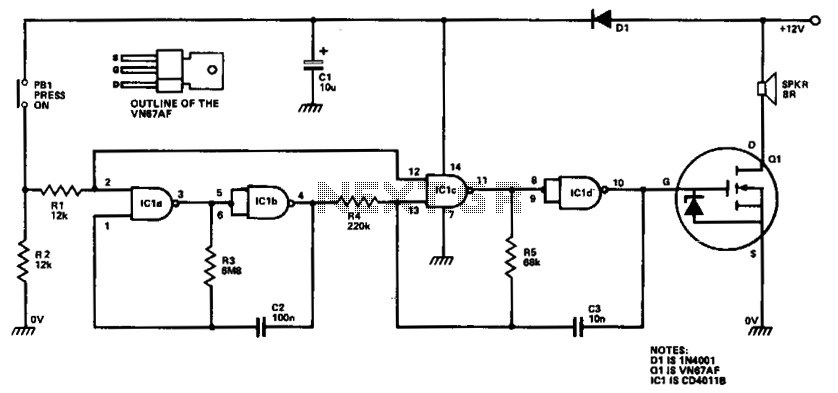
Alternative Halogen Power Supply

Readers who do not wish to modify the power supply of an old PC into a suitable halogen power source may find the present design useful.
The design in question pertains to the conversion of an old PC power supply unit (PSU) into a power source suitable for halogen lighting applications. This involves several key considerations for ensuring compatibility and safety.
Firstly, the standard PC power supply outputs multiple voltage levels, typically including +3.3V, +5V, and +12V. Halogen lamps generally operate at higher voltages, often at 12V or 24V, depending on the specific application. Therefore, the relevant output from the PSU would be the +12V rail, which can be utilized directly for halogen bulbs that are rated for this voltage.
To adapt the PSU for halogen use, it is essential to ensure that the power supply can handle the current requirements of the halogen lamps, as they typically draw significantly more current than standard PC components. A careful calculation of the total wattage required by the halogen lamps should be performed to prevent overloading the PSU.
Additionally, modifications may include the removal of unnecessary connectors and the installation of appropriate connectors for the halogen lamps. This might involve soldering new connectors or using terminal blocks to facilitate easy connections.
Safety precautions should also be a priority during this modification process. Proper insulation and heat management must be considered, as halogen lamps can operate at high temperatures. Adequate ventilation should be ensured, and the PSU should be housed in a manner that prevents accidental contact with live components.
In conclusion, transforming an old PC power supply into a halogen power source is a practical solution for those seeking to repurpose existing hardware. By following the necessary electrical specifications and safety guidelines, this conversion can provide an efficient lighting solution while minimizing waste.Readers who do not care to modify the power supply of an old PC into a suitable halogen power source (see our April 2006 issue), may find the present desi.. 🔗 External reference
The design in question pertains to the conversion of an old PC power supply unit (PSU) into a power source suitable for halogen lighting applications. This involves several key considerations for ensuring compatibility and safety.
Firstly, the standard PC power supply outputs multiple voltage levels, typically including +3.3V, +5V, and +12V. Halogen lamps generally operate at higher voltages, often at 12V or 24V, depending on the specific application. Therefore, the relevant output from the PSU would be the +12V rail, which can be utilized directly for halogen bulbs that are rated for this voltage.
To adapt the PSU for halogen use, it is essential to ensure that the power supply can handle the current requirements of the halogen lamps, as they typically draw significantly more current than standard PC components. A careful calculation of the total wattage required by the halogen lamps should be performed to prevent overloading the PSU.
Additionally, modifications may include the removal of unnecessary connectors and the installation of appropriate connectors for the halogen lamps. This might involve soldering new connectors or using terminal blocks to facilitate easy connections.
Safety precautions should also be a priority during this modification process. Proper insulation and heat management must be considered, as halogen lamps can operate at high temperatures. Adequate ventilation should be ensured, and the PSU should be housed in a manner that prevents accidental contact with live components.
In conclusion, transforming an old PC power supply into a halogen power source is a practical solution for those seeking to repurpose existing hardware. By following the necessary electrical specifications and safety guidelines, this conversion can provide an efficient lighting solution while minimizing waste.Readers who do not care to modify the power supply of an old PC into a suitable halogen power source (see our April 2006 issue), may find the present desi.. 🔗 External reference





